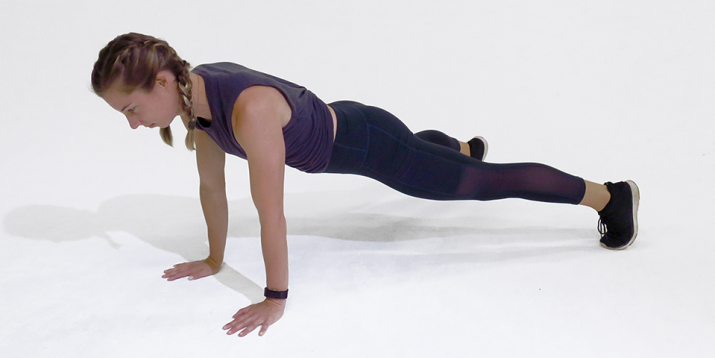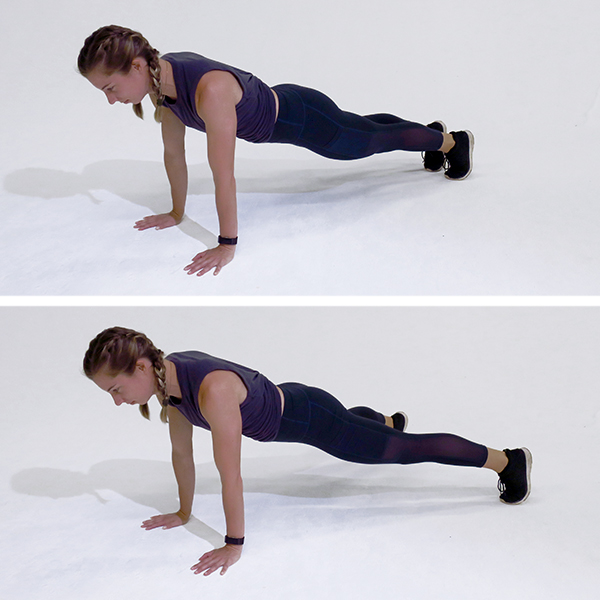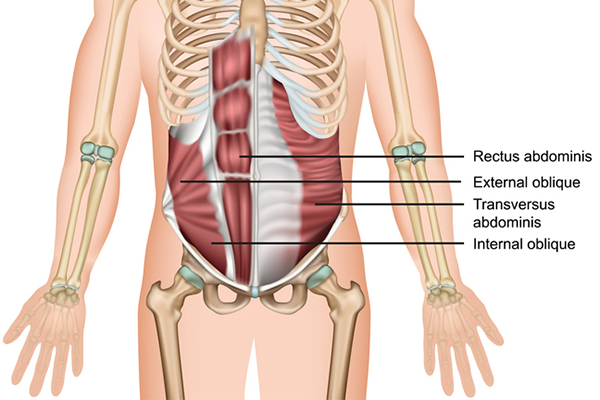How to Do the Plank Jack

Holding a high plank — as if you’re at the top of a pushup — is a good core builder on its own. But you can work even more muscles and up the calorie burn if you get to know jack.
What is a plank jack? It’s a simple move that turns a static hold into a dynamic exercise that’s effective on its own, but also offers plenty of opportunity for variations.
“The plank jack combines two classic exercises, giving you the core-sculpting benefits of the plank, and the cardio and power-building elements of the jumping jack,” says Trevor Thieme, C.S.C.S.
Plank Jacks: Step-by-Step Instructions

- Start in push-up position: feet together, body straight from head to heels, arms straight and in line with but slightly wider than your shoulders. This is the starting position.
- Keeping your core engaged, jump your legs outward, and then back to the starting position without letting your hips drop, as if performing a horizontal jumping jack.
What Muscles Does the Plank Jack Work?

Plank jack exercises are about creating stability while performing explosive movement.
That means working your core muscles, which must act together to keep you in proper alignment through the move.
- Erector Spinae: These muscles run the length of your spine and help to keep it straight.
- Transverse abdominus: This sheet of muscle wraps horizontally around your lower abdomen, and helps stabilize your spine.
- Rectus abdominus: Also known as the six-pack muscle, this front-facing abdominal muscle is also essential for keeping your spine stable.
Also getting work in more of an isometric role are the chest, shoulders, and triceps. In order to make sure you’re working the right muscles, be sure to concentrate on your form, Thieme says.
“Don’t let your hips sag,” he says. “Keep your core engaged and body straight from head to heels from beginning to end.”
How to Make the Plank Jack Harder
There are several ways to increase intensity with your plank jack workout, including:
- Perform the move on your forearms instead of your hands.
- Do an “uneven plank,” with one forearm down and one palm on the floor.
- Add your plank jacks to a burpee set, by performing them just after the leg thrust.
- Jump your hands out to the sides and back simultaneously with your feet.
How to Make the Plank Jack Easier
If you’re new to plank jacks, coming back from an injury, or simply want to slow it down to work on your form, there are several ways to dial down the intensity while still getting a great workout for those key muscles.
- From a high plank position, jump your legs out to the sides and hold for a few seconds, and then jump back in and hold for another few seconds. In short, slow your tempo.
- Another way to make the plank jack easier is to step your feet out to your sides instead of jumping them out simultaneously.
Plank jacks are a great way to add a dose of cardio and core work to any workout, and the broad array of variations helps keep them interesting — and effective.
